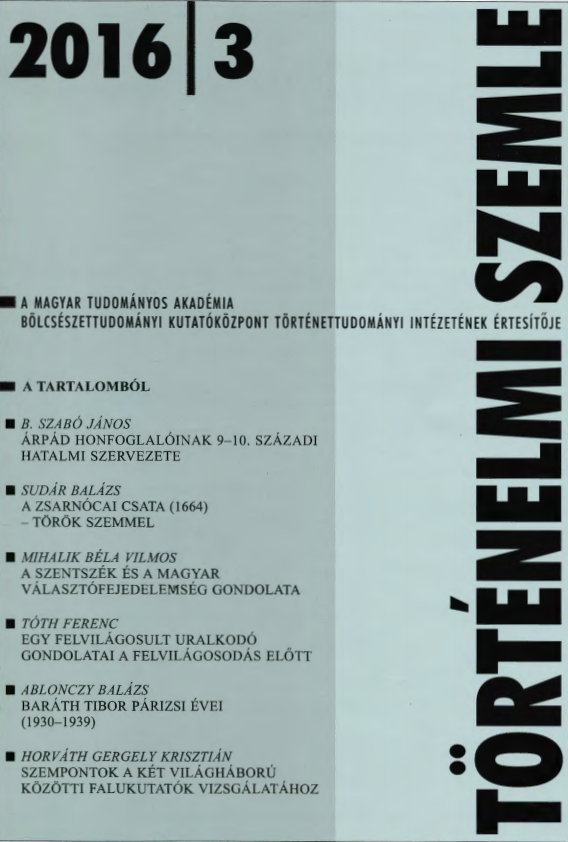Műhelyek, pályák, módszerek - Szempontok a két világháború közötti falukutatók vizsgálatához
Ateliers, Careers, Methods. New Perspectives for the Study of Village Researchers in the Interwar Period
Author(s): Gergely Krisztián HorváthSubject(s): Geography, Regional studies, Rural and urban sociology, Interwar Period (1920 - 1939)
Published by: Magyar Tudományos Akadémia Bölcsészettudományi Kutatóközpont Történettudományi Intézet
Keywords: agrarian society; Hungary; interwar period; history; village society; village research;
Summary/Abstract: The unsolved problem of agrarian society and the grave social problems of peasant society loomed large over the public opinion of interwar Hungary. In the early 1930s young university students, then in their twenties, launched a movement with the aim of exploring the real situation of village society. Their movement came to be known as the „village research”. In the past seventy years scholarship has mainly integrated those aspects of the research which seemed compatible with the leftish traditions. The present study formulates four questions with regard to the village research movement, proposing suggestions for the reassessment of the connected problems. 1) Research has so far concentrated on the activities of individual persons, neglecting the issue of ateliers: who formed, and under what kind of influences, those communities and colleges from which the career of any given village researcher started? What role did the church play? The importance of provincial centers, such as Sárospatak, Szeged or Kolozsvár, has received no attention at all, or their assessment has begun only recently. 2) Little is known about the role of scouting, although many among the key figures of village research were simultaneously scouts as well (Zoltán Szabó, Imre Kovács, Kálmán Újszászy). As the leader of Hungarian scouting, the role of the conservative Pál Teleki has likewise to be reassessed, as he frequently legitimated with his authority those approaches of the village researches among his disciples which overtly questioned the legitimacy of the Horthy regime. 3) The effort at locating contemporary public fi gures, among them the village researchers, mechanically along a political value axis ranging from right to left is regarded by the author as unfruitful. Instead, he proposes the introduction of a value matrix where one endpoint of the y axis is constituted by the defense of old feudal rights, and the other by the totalitarian state. This axis is intersected by another one of individualist/liberal vs communitarian/nationalist. The negative or positive attitude towards the regulating role of market is introduced as a third level. 4) Questions of genre and terminology connected to the village research also present several problems in the Hungarian specialist language. The author draws attention to the fact that, in the wake of Steinmetz and Tönnies, sociography originally started as field-based analytical-descriptive science, as opposed to statistics and sociology, which define themselves as nomothetic. Yet precisely the activity of the village researchers brought about a change in the meaning of sociography, which is still understood in Hungary as a genre which, consciously operating with report-like elements, borders on literature.
Journal: Történelmi Szemle
- Issue Year: 2016
- Issue No: 03
- Page Range: 451-463
- Page Count: 13
- Language: Hungarian

